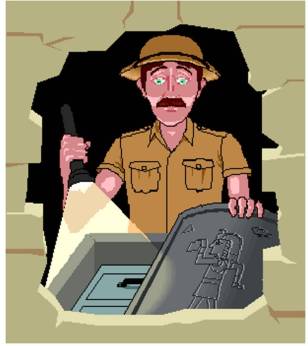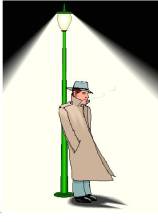Discovering Aspects of Your Main Character That Even He Didn’t Know Existed
 Aristotle said there were five basic parts of a story: Plot, Character, Setting, Dialogue, and the meaning or point behind a story. People have argued for ages which is the more important, plot or character, but even though I agree with Aristotle that plot is the most important, we do like stories brimming with compelling characters.
Aristotle said there were five basic parts of a story: Plot, Character, Setting, Dialogue, and the meaning or point behind a story. People have argued for ages which is the more important, plot or character, but even though I agree with Aristotle that plot is the most important, we do like stories brimming with compelling characters.
I personally want the main character to be someone I would invite into my home; after all, we will be spending some quality time together, often in bed early in the morning… What I mean by that is simple. After my husband has left for work and I am curled up with a good book, I want the hero to be someone I can trust or the heroine to be someone I can go to lunch with or maybe to some breaking and entering with, if that’s the caper.
 When I came up with Johnny Casino, the character who inhabits the pages of the three books in The Johnny Casino Casebook series, I wanted someone with a past. The opening line from Past Imperfect, number one in the series is this: My name is Johnny Casino. I’m a retired P.I. with a past. I just hope it doesn’t catch up with me.
When I came up with Johnny Casino, the character who inhabits the pages of the three books in The Johnny Casino Casebook series, I wanted someone with a past. The opening line from Past Imperfect, number one in the series is this: My name is Johnny Casino. I’m a retired P.I. with a past. I just hope it doesn’t catch up with me.
Of course his past does catch up with him, often. In fact, every “guest star” in each case in the first collection of short stories has a past, whether good or bad. It’s up to Johnny to sort it out. But along the way, he has to come to terms with his own past.
As I delved into his background while I was writing these stories, he explained a lot about himself. It might sound odd that I am giving credit to my character, but any writer will tell you these “people” have a life, if not a voice, of their own and when they whisper or yell in your ear, you listen.
 The first story I wrote had Johnny mention that he once worked for the Mob. I was channeling his voice and the words just came. Then I realized I needed to know a little bit about the Mafia. An ex-cop acquaintance with a rather interesting connection to the Mafia told me what books to read and he also shared some insights that you might never find in a book, but if you did, you would think it was fiction.
The first story I wrote had Johnny mention that he once worked for the Mob. I was channeling his voice and the words just came. Then I realized I needed to know a little bit about the Mafia. An ex-cop acquaintance with a rather interesting connection to the Mafia told me what books to read and he also shared some insights that you might never find in a book, but if you did, you would think it was fiction.
This revelation made me dig deeper into Johnny’s character. Even the names of the Mafia guys Johnny worked for changed. One was called Eddie Fontaine, but it changed to Big Eddie “Mambo” Fontaine when I knew him better.
 Elmore Leonard once mentioned when he gave one of his characters the wrong name, the guy wouldn’t talk, but when he changed the name, he couldn’t shut him up. The man was on to something.
Elmore Leonard once mentioned when he gave one of his characters the wrong name, the guy wouldn’t talk, but when he changed the name, he couldn’t shut him up. The man was on to something.
It’s these layers that build up, like a pearl, that allow the writer to “create” a three-dimensional character. The first story I wrote briefly mentioned Johnny’s Mafia history. The second story, a flashback, shows it in somber detail and it also explains why Johnny has a problem with women. He will be a knight-in-shining armor to a lady in distress, even if she is less than virtuous, but he can be tough, too.
 As I was on this road of discovery, I realized I had given Johnny the title: Hollywood Detective, but I didn’t have a story with a movie star. I do now, and a few of these legends make a return engagement in subsequent books. I decided not to use actual names of stars, but I did borrow heavily from stars I liked from the past, but mostly it was their stature and the era, since I doubt if any of these luminaries had too many dead bodies in their own past. That would be another story.
As I was on this road of discovery, I realized I had given Johnny the title: Hollywood Detective, but I didn’t have a story with a movie star. I do now, and a few of these legends make a return engagement in subsequent books. I decided not to use actual names of stars, but I did borrow heavily from stars I liked from the past, but mostly it was their stature and the era, since I doubt if any of these luminaries had too many dead bodies in their own past. That would be another story.
But I learned Johnny had a code, and sometimes that meant breaking the law to do the right thing or maybe covering up something illegal for a friend. But one of the coolest things I discovered in writing the first book was that Johnny’s past might not even be what he thinks it is. That question is answered in the next book in the series – Looking for Johnny Nobody. The first book sets the stage and lets you meet a few other characters that inhabit his world. And as I said on the back cover of the book – everybody has a past.
By the time I started book three, Just Shoot Me, I let Johnny take over and write those stories. He had discovered some new things about his own life that changed everything for him and he was going to carry on with this new identity that he had. But there was something else… He was growing. He was becoming a real character.
 My newest character in a series is Chance McCoy. I bill him as a third rate P.I. in a secondhand suit who blows half the cases he takes on. Not a great track record. Then Chance is shot… and killed. But Chance gets the opportunity of a lifetime. He gets to come back, alive. Now he can fix some of those old cases and take on some that challenge even the brightest detectives. What does he use? As the guy who sent him back tells him: You use what’s inside. Chance’s discovery process is a trip in book one: Second Chance. Finding different aspects in this character was definitely a trip for this writer as well.
My newest character in a series is Chance McCoy. I bill him as a third rate P.I. in a secondhand suit who blows half the cases he takes on. Not a great track record. Then Chance is shot… and killed. But Chance gets the opportunity of a lifetime. He gets to come back, alive. Now he can fix some of those old cases and take on some that challenge even the brightest detectives. What does he use? As the guy who sent him back tells him: You use what’s inside. Chance’s discovery process is a trip in book one: Second Chance. Finding different aspects in this character was definitely a trip for this writer as well.
 Aren’t memorable characters what writers want to create? And isn’t that what readers want to read. You betcha. Write On.
Aren’t memorable characters what writers want to create? And isn’t that what readers want to read. You betcha. Write On.


Fun piece, Gayle. I love your description of Chance, “a third rate P.I. in a secondhand suit who blows half the cases he takes on. ” And, as you say, the characters take on lives of their own, that’s when they really start to click. I think the best stories are a combination of good plot and good characters. They work symbiotically with each other.
LikeLiked by 2 people
You are so right, Paul. Plot and character make for a good story. I try to provide both in my work, short stories or novels. We owe it to the reader and to ourselves. After all, we spend a lot of time with those people.
LikeLiked by 1 person
Gayle, this article is a must-read for all writers in every fictional, if not non-ficti0onal, genre. The tale of how Johnny’s character gradually unfolded is fascinating, and encourages us to give our own characters a chance to ‘talk’ to us when we’re sitting at the computer figuring out who they really are. Thanks for sharing the combination of research, your insight, and how you create while writing .
LikeLiked by 2 people
Thank you, Jill. Since you write both fiction and non-fiction, you have to find that person if he’s fictional and bring him to life. And if he’s real, you have to pull out the best parts so you can tell a compelling true-life story. And you do just that.
LikeLike
Thanks. The famous bodybuilder I am ghosting for is both!!!
LikeLiked by 1 person
Great observations, Gayle. Building three-dimensional characters layer by layer, “like a pearl”, is so critical. That’s how our creations develop a voice of their own. It’s like casting the right actor for a role. Like Paul’s observation about plot and character, the relationship between character and author becomes symbiotic, with each contributing to the development and direction. Those of us who write series have the advantage of time (and pages) to do that, but that adds a responsibility to stay true to the “layers” you’ve already created. Aloha.
LikeLiked by 2 people
Staying true to a character is magic, especially when that character has yet undiscovered layers. I love discovering them.
LikeLike
I love this blog post. Not only does it describe your way of writing and creating characters, it’s written like a story itself, plot and all. (Follow me, while I show you how I created Johnny Casino. I dig. I follow leads. I put the facts together in new ways. And I always get my man!) Great stuff, Gayle. You’ve taught me and a whole lot of others the art of writing fiction.
LikeLiked by 2 people
Jackie, I have discovered so much as I both teach writing and write. If I didn’t learn along the way, I’d never be able to explain these things to others. We never stop learning.
LikeLiked by 1 person
Great post, GB, and some interesting background on my favorite PI. The part about names really rang true; I have labored to get the right names for my characters, and some names come preloaded with baggage for me. I’ve often struggled to breathe life into my characters, and it’s so cool when one of them comes to life all by him/herself and all I have to do is follow them around and transcribe their dialog. Doesn’t happen often enough, but when it does–wow!
LikeLiked by 2 people
Bonnie, I do think that the more we write, the more of these tools make themselves available to us. I guess it is what they call “honing one’s craft.” I keep trying to sharpen my tools.
LikeLike
As always, you give great insights to the writing process. I look forward to meeting your latest character!
LikeLiked by 2 people
Jack, You have done a terrific job developing the Harlow Brothers. They jump off the page with character. I’m waiting for your next book.
LikeLike
Excellent post, Gayle, and you clearly know what you’re talking about because I love Johnny Casino and Chance McCoy. Somehow you’ve made them come alive (or maybe they did it themselves–especially Chance with such a great name like that!) And yes, I would definitely like to have lunch with both.
I’m in the “characters” make the story camp. Even if a story is outstanding, if I don’t like the people living it, won’t read.
Very enjoyable post.
LikeLiked by 3 people
Mad, I do want to like, if not love, the characters in a book. But I still want them to do something exciting or daring along the way. I can’t separate the two.
LikeLike
Terrific post, Gayle. Worthy of a writing class. Elmore Leonard’s experience with the wrong name muting his character is one I haven’t heard before, but I’m sure it’s absolutely true. I think that plot and character go together but, in my experience, characters will be remembered long after the plot is forgotten.
LikeLiked by 2 people
Maggie, As I said to Madeline, I can’t separate plot and character. I want good characters doing fabulous things.
LikeLiked by 1 person
Gayle, your thoughts on “What Lies Beneath the Surface” are excellent . This plot/character thing is so true. Although my mysteries tend to be plot driven, I’m aware that characters are equally important. What plot would there be without the character enacting it? As for names, you gave Johnny Casino and Chance McCoy the perfect ones.
LikeLiked by 1 person
Alice, Your plots and characters are a great example and now that you are doing some stand-alones, you have really captured the bad guy as well as the heroes. Some people forget the bad guy drives the story.
LikeLiked by 1 person
Gayle – this is so right on! I always feel the characters are the most important part of writing. As you say -do we really want to spend time with them? I, too, love the way you unravel the story and take us down the path to discover your characters. Can’t wait for the next one.
LikeLike
Rosemary, Too many writers try to over-think both plot and character when all they have to do is make the plot enticing and the characters memorable… and hopefully likeable. The bad guy can be the exception., but even he or she must have a reason for their mayhem.
LikeLiked by 1 person